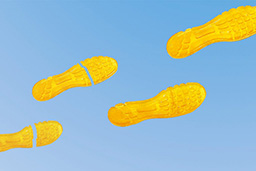ME Curriculum Quick Tips
General Education Requirement
All six courses for Content Areas 1, 2, and 3 must be from different academic departments/units. For Content Area 4, two courses are required. These two courses may be from the same department. One can be double counted (+) from Content Area 1 or 2. One must be an international course (I). (More information on the General Education Requirement)
Mechanical Engineering Requirement
9 credits in 2000 level or higher ME Courses which are not used to satisfy any other requirement. (More information on the Mechanical Engineering Requirement)
Professional Requirement
This requirement is met by 6 credits in 2000 level or higher courses in any Engineering department or from Mathematics, Statistics, Physical and Life Sciences as listed in the UConn Undergraduate Catalog.
W Requirement
All ME students are required to take two writing (W) courses, i.e., ME 4973W plus one other before graduation. (See the UConn Undergraduate Catalog under “Academic Regulations”).
Math or Science Requirement
6 credits in 1000 (100) or higher level Mathematics, Statistics, Physical and Life Sciences as listed in the UConn Catalog meet this requirement. Courses at the 2000 level can also be used to meet the Professional Requirement. Some restrictions apply. (More information on the Math or Science Requirement)
Language Requirement
To satisfy the language requirement, a student has to present either 3 years intermediate level of one foreign language (high school) or 2 semesters (college) of one foreign language.
Mechanical Engineering Electives
9 credits in 3000 (200) level or higher Mechanical Engineering courses which are not used to satisfy any other requirement. No more than one ME 3999 course may be used toward meeting this requirement. This course work may also be applied towards a minor.
Free Electives
Any course meets this requirement except those listed under restrictions in the UConn Undergraduate Catalog – Engineering Section.
Plan of Study
Each student must complete a Plan of Study form in the first semester of the junior year. Plan of Study forms detail how a student will meet curricular requirements.
ME Curriculum Tips continued
Bottleneck Course
Bottleneck courses are prerequisites to other courses. Students should pay extra attention to these courses when considering their curricular plan as a delayed bottleneck course can affect the graduation date. Example bottleneck courses are ME 2233, ME 3250, CE 2120, and CE 3110. The ME Curriculum Map in the ME Course can be used to identify bottleneck courses.
Undergraduate Transfer Admission
Undergraduate Admissions offers a list of UConn equivalencies of courses transferred from 35 colleges/universities in Connecticut.
ME Areas of Concentration (optional)
Students may choose to focus their 3 required ME electives (taken in the Junior/Senior years) in one Area of Concentration: 1) Aerospace, 2) Dynamic Systems and Control, 3) Energy and Power, 4) Design and Manufacturing. (More information on the ME Areas of Concentration)
Double Major (optional)
The requirements of the home department of each major will determine double major requirements. Generally, the number of credits should satisfy both majors. The student must meet the requirements of both, but will not need 128+128=256 credits because many courses can be counted for both majors. A separate Plan of Study form must be prepared and submitted for approval to each department.
Double Degree (optional)
Students may earn two separate bachelor degrees from two different schools or colleges of the University. Students must meet the requirements of both schools/colleges, and a Plan of Study form must be submitted to each department for each degree.
Minor (optional)
15 credits are needed in order to qualify for a minor. However, a minor in Materials Science & Engineering requires 16 credits due to a one-credit lab course. Math Minor (optional) In addition to the 2 Math courses (Math 1132Q and 2211) listed in ME Requirements, three additional courses (9 credits) are necessary for a math minor. Please read the UConn Undergraduate Catalog “Minors – Mathematics” for details. (Note: “Pass/Fail” is not allowed except for credits beyond 128).







